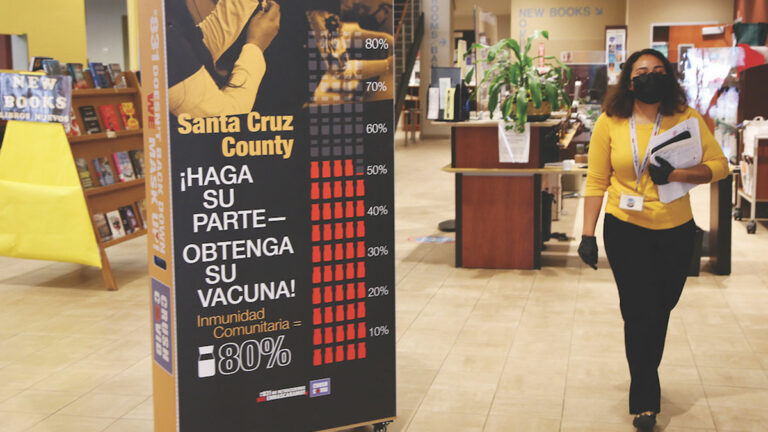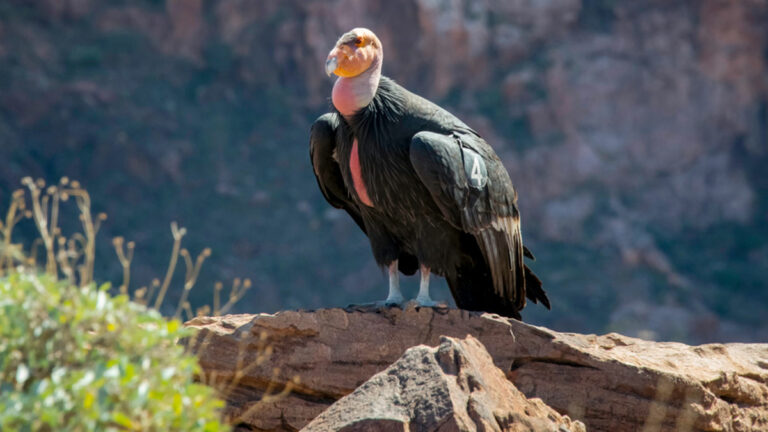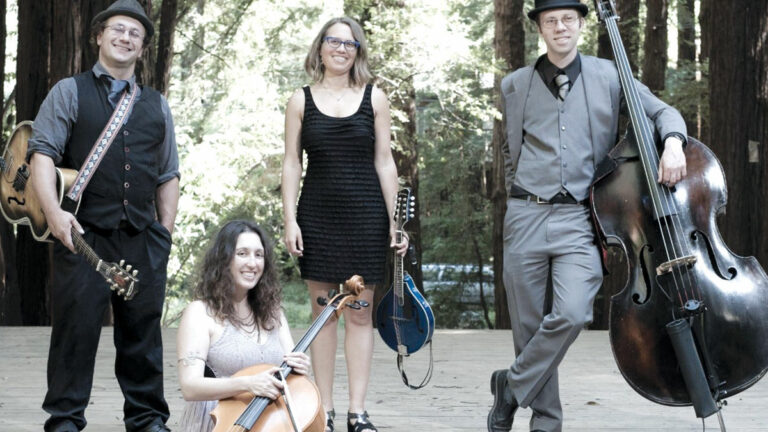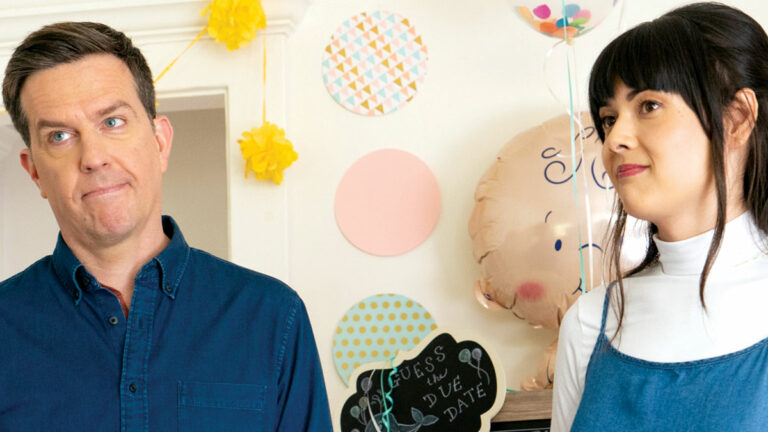A weekly guide to what’s happening.
ARTS AND MUSIC
CABRILLO BLACK BOX THEATRE Cabrillo Theatre Arts proudly presents “Almost, Maine,” by John Cariani, directed by Robin Aronson. Virtual performances will be held May 7-14, produced and performed in Cabrillo’s Black Box Theatre. “Almost, Maine” takes place one cold winter night, under the northern lights, in the remote, mythical town of Almost, Maine. The characters are couples, friends and strangers who encounter the shifting boundaries within their relationships. Humorous and heartfelt, nine loosely connected tales explore the push and pull of love, the unexpected discoveries people make about themselves and others, and the moments of magic that come out of nowhere and change everything. Show runs May 8-14, with on-demand 24 hour streaming performances. Tickets are free of charge, but donations are gratefully accepted at cabrillo.edu/vapa/#events.
DINNER AND A SHOW WITH DIRTY CELLO AT MICHAEL’S ON MAIN Dinner starts at 6:30pm and showtime is at 8pm. $45 for dinner and show. Seated. Saturday, May 15. Michael’s on Main, 2591 S Main St., Soquel.
DOWNTOWN SANTA CRUZ MAKERS MARKET Come on out and support local makers and artists at the Downtown Santa Cruz Makers Market every third Sunday of the month on Pacific Avenue at Lincoln Street! Support local and shop small with over 30 Santa Cruz County artists and makers. Don’t forget to stop in and visit the downtown merchants and grab a bite to eat from the downtown restaurants. Remember to social distance as you shop and wear your mask. If you’re not feeling well, please stay home. There will be hand sanitizing stations at the market and signs to remind you about all these things! Friendly, leashed pups are welcome at this free event. Sunday, May 16, 10am-5pm. Downtown Santa Cruz Makers Market, Pacific Ave., Santa Cruz.
GOAT HILL FAIR VINTAGE MARKET We are back after a long pause during Covid. This is a Covid-safe event. All county protocols maintained. A day of fun searching for vintage items to suit your home and self. Discover garden and home furnishings, jewelry, handmade goodies and fun clothing items. All styles available—from rustic to fine, French to industrial, repurposed to classic—you can eat, drink and then shop some more. Tickets available online and at the gate. Parking is free. Please bring your mask. Saturday, May 15, 10am. Santa Cruz County Fairgrounds, 2601 E. Lake, Watsonville.
GUELAGUETZA SANTA CRUZ 2021 VIRTUAL Senderos will present a free virtual Guelaguetza festival on Sunday, May 16 streaming at 11am. You can join us on Facebook at Guelaguetza Santa Cruz or our website scsenderos.org. This year’s event will feature new performances by Centeotl Danza y Baile and Ensamble Musical de Senderos. We have the honor to share Guelaguetza all the way from Oaxaca with performances by danzantes from La Villa De Zaachila and bailarines from Huajuapan de León y Tlaxiaco. For the second year due to Covid restrictions, we are not able to be together in-person in downtown Santa Cruz for our authentic food, music, dance and crafts cultural festival like those held annually in Oaxaca, Mexico. But our dancers and musicians have been keeping the spirit of guelaguetza year-round and are excited to share it with you. Guelaguetza means a commitment of sharing and cooperation, and that is something that Senderos and so many in our community have been dedicated to throughout this pandemic. This event benefits Senderos, a volunteer-based nonprofit in Santa Cruz providing free dance and music classes, tutoring and scholarships for Latinx youth. For more information visit scsenderos.org or call 831-854-7750. Sunday, May 16, 11am.
KEEP ON TRUCKIN’ Powered by Tandy Beal and Company and a lot of great friends, this event presents exceptional artists in free 15-minute mini-shows on a flatbed truck outside. Knowing that everyone is a bit stressed, we are offering this taste of music and circus to uplift our neighborhoods. Keep each other safe, wear your masks and keep your distances social—otherwise the truck will need to move on. Each stop on our Truckin’ Tour will be a 20-minute performance: 11am at Garfield Part (199 Seaside St.); 11:45am at University Terrace Park (369 Meder St.); 12:30pm at Westlake Park (Bradley Drive and Majors St.); 2:15pm at Ocean View Park (102 Ocean View Ave.); 3pm at Frederick St. Park (168 Frederick St.). More information at tandybeal.com. Saturday, May 15, 11am-3pm.
TOP DOG FILM FESTIVAL We will have a limited capacity, opening night, live audience screening. We will be following local Covid protocols. Celebrate the canine connection through this carefully curated collection of heartwarming stories about dogs and their people at the 2021 Top Dog Film Festival. The 2021 Top Dog Film Festival presents a two-hour cinematic celebration honoring the bond between dogs and their people. It is filled with delightfully doggy moments of joy and celebration of our beloved canine companions. This carefully curated program of short canine-themed films is comprised of the most inspirational, heart-warming and entertaining stories about dogs and their human companions, from independent filmmakers around the globe. Get your tickets before they all sell out —you’d be barking mad to miss it! If you aren’t ready for an in-person theatre experience, there is also a virtual screening held at 7pm from May 14-24. Visit riotheatre.com for more information. Friday, May 14, 7pm. Rio Theatre, 1205 Soquel Ave., Santa Cruz.
COMMUNITY
10 WARNING SIGNS OF ALZHEIMER’S WEBINAR Alzheimer’s and other dementias cause memory, thinking and behavior problems that interfere with daily living. Join us to learn how to recognize common signs of the disease, how to approach someone about memory concerns, the importance of early detection and benefits of a diagnosis, possible tests and assessments for the diagnostic process, and Alzheimer’s Association resources. For more information and to register call 800-272-3900. Thursday, May 13, 3-4:30pm.
BECOMING A HOSPICE VOLUNTEER VISITOR: INFORMATIONAL Q&A SESSION VIA ZOOM Join us for an informational Q&A session about becoming a volunteer visitor with Hospice of Santa Cruz County. Forbes Ellis, our director of volunteer services, will be available to answer any questions you may have, as well as provide more information on what you can expect during your training. Volunteer visitors provide companionship to hospice patients in their homes or in the residential care facilities where they reside. As a willing listener and supportive presence, these special volunteers are vital members of the hospice team. During shelter in place, volunteer visitors are supporting patients while social distancing via Zoom visits, letter writing, and running errands. Visit hospicesantacruz.org for more information and to register. Thursday, May 13, 1pm.
GREY BEARS BROWN BAG LINE If you are able-bodied and love to work fast, this is for you! Grey Bears could use more help with their brown bag production line on Thursday and Friday mornings. As a token of our thanks, we make you breakfast and give you a bag of food if wanted. Be at the warehouse with a mask and gloves at 7am, and we will put you to work until at least 9am! Call ahead if you would like to know more: 831-479-1055, greybears.org. Thursday, May 13, 7am. California Grey Bears, 2710 Chanticleer Ave., Santa Cruz.
NAGA WATER OFFERING Human ignorance and materialism are destroying the earth, distributing the earth’s natural spirits called nagas, bringing pandemic, natural disaster, fires, floods, drought, powerful storms and great unrest. This ancient torma offering ceremony, first conferred by Buddha Tonpa Shenrab, is an effective method for pacifying problems of physical, mental and environmental imbalance and restoring peaceful and compassionate relations in our world. By donation. For more information and to register, visit kunsanggarcenter.org/torma. Sunday, May 16, 10am.
SALSA SUELTA FREE ZOOM SESSION SALSA SUELTA FREE ZOOM SESSION Keep in shape! Weekly online session in Cuban-style Salsa Suelta for experienced beginners and up. May include mambo, chachacha, Afro-Cuban rumba, orisha, son montuno. No partner required, ages 14 and older. Contact to get the link. salsagente.com. Thursday, May 13, 7pm. Louden Nelson Community Center, 301 Center St., Santa Cruz.
TENANTS’ RIGHTS HELP Tenant Sanctuary is open to renters living in the city of Santa Cruz with questions about their tenants’ rights. Volunteer counselors staff the telephones on Tuesdays, Thursdays and Sundays from 10am-2pm. Tenant Sanctuary works to empower tenants by educating them on their rights and providing the tools to pursue those rights. Tenant Sanctuary and their program attorney host free legal clinics for tenants in the city of Santa Cruz. Due to Covid-19 concerns, all services are currently by telephone, email or Zoom. For more information visit tenantsanctuary.org or follow us on Facebook at facebook.com/tenantsanctuary. 831-200-0740. Thursday, May 13, 10am-2pm. Sunday, May 16, 10am-2pm. Tuesday, May 18, 10am-2pm. Tenant Sanctuary, 703 Pacific Ave., Santa Cruz.
VIRTUAL SCRABBLE TOURNAMENT Virtual Scrabble Tournament Fundraiser. This year we cannot hold our in-person Scrabble Tournament so we have made it virtual. The tournament will run from May 15-May 29. Visit sclawlib.org/events/scrabble-tournament for more information. All proceeds are split between the Santa Cruz County Law Library and Board of Education’s Teen Peer Court Program. Saturday, May 15.
GROUPS
CAREGIVER SUPPORT GROUP VIA TELEPHONE Support groups create a safe, confidential, supportive environment or community and a chance for family caregivers to develop informal mutual support and social relationships as well as discover more effective ways to cope with and care for your loved one. Meeting via Zoom and phone. Who may benefit from participating in the support group? Family caregivers who care for persons with Alzheimer’s disease or another dementia, those who would like to talk to others in similar situations and those who need more information, additional support and caregiving strategies. To register or questions please call 800-272-3900. Wednesday, May 12, 2pm.
ENTRE NOSOTRAS GRUPO DE APOYO Entre Nosotras support group for Spanish speaking women with a cancer diagnosis. Meets twice monthly. Registration required; call Entre Nosotras 831-761-3973. Friday, May 14, 6pm. WomenCARE, 2901 Park Ave., Suite A1, Soquel.
OVEREATERS ANONYMOUS All our OA meetings have switched to being online. Please call 831-429-7906 for meeting information. Do you have a problem with food? Drop into a free, friendly Overeaters Anonymous 12-Step meeting. All are welcome! Sunday, May 16, 9:05-10:15am.
WOMENCARE ARM-IN-ARM WomenCARE ARM-IN-ARM Cancer support group for women with advanced, recurrent or metastatic cancer. Meets every Monday at WomenCARE’s office. Currently on Zoom. Registration required; contact WomenCARE at 831-457-2273. All services are free, for more information visit womencaresantacruz.org. Monday, May 17, 12:30pm.
WOMENCARE TUESDAY SUPPORT GROUP WomenCARE Tuesday Cancer support group for women newly diagnosed and through their treatment. Meets every Tuesday currently on Zoom. Registration required; contact WomenCARE at 831-457-2273. Tuesday, May 18, 12:30-2pm.
WOMENCARE: LAUGHTER YOGA Laughter yoga for women with a cancer diagnosis. Meets every Wednesday, currently via Zoom. Registration required; contact WomenCARE at 831-457-2273. Wednesday, May 12, 3:30-4:30pm.
OUTDOOR
LABSIDE CHATS: A CONVERSATION WITH A SCIENTIST WITH STEPHANIE BRODIE, PHD Tune in for the next Labside Chat with Stephanie Brodie, project scientist at UCSC and researcher with the Fisheries Collaborative Program on Thursday, May 13, at 11am. Learn why scientists track marine predators in the ocean and how this helps protect endangered species such as whales and sea turtles. Join the conversation! Submit your questions in advance for Stephanie, then watch the conversation to hear the answers during the live chat. Help us put together questions such as: how are migratory species defined, and how do we understand where they live in the ocean? What is bycatch, and how are management tools used to reduce its impact? How do marine predators respond to environmental change? Visit the Seymour Center’s website to submit your questions in advance and to watch the live conversation: seymourcenter.ucsc.edu/learn/ongoing-education/labside-chats. Thursday, May 13, 11am.
VIRTUAL SCIENCE SUNDAY — GETTING UNDER A SEA OTTER’S SKIN: THE ANATOMY OF SENSITIVE TOUCH Sea otters are in a race against time. To survive, they hunt for clams, crabs, urchins, snails, mussels and abalone down to 100 feet deep. Otters must work quickly since they can hold their breath for only one-to-three minutes per dive, and their prey is often found in rocky crevices or buried under the sand. Scientists have discovered that sea otters are fast decision makers with the help of their ultra-sensitive paws and whiskers. As a follow-up to that research, scientists explored what’s happening underneath the skin’s surface to enable sea otters’ impressive abilities. Join Sarah McKay Strobel to explore how the anatomy of skin influences the sense of touch in a hungry sea otter, as well as how researchers interpret clues from anatomy to learn how animals perceive the world. Register in advance for the online Science Sunday webinar (required) at seymourcenter.ucsc.edu/learn/ongoing-education/science-sundays. Please register at least one hour prior to event start time. Registration closes an hour prior. Sunday, May 16, 1:30pm.
VIRTUAL YOUNGER LAGOON RESERVE TOURS Younger Lagoon Reserve is now offering a virtual tour in both English and Spanish. This virtual tour follows the same stops as the Seymour Marine Discovery Center’s docent-led, in-person hiking tour, and is led by a UCSC student! Virtual Younger Lagoon Reserve tours are free and open to the public. Part of the University of California Natural Reserve System, Younger Lagoon Reserve contains diverse coastal habitats and is home to birds of prey, migrating sea birds, bobcats, and other wildlife. See what scientists are doing to track local mammals, restore native habitat, and learn about the workings of one of California’s rare coastal lagoons. Access the tours at seymourcenter.ucsc.edu/visit/behind-the-scenes-tours/#youngerlagoon. Sunday, May 16, 10:30am.
WALK FOR CASA! Due to the Human Race going on pause this year, CASA of Santa Cruz County, with the help of the Friends of CASA, will be holding our own Walk for CASA! We are going virtual this year with a hybrid option. Walk or run anywhere at any time or join us for a socially distant walk at Elkhorn Slough on May 15 between 9am-noon. All proceeds from this event support CASA of Santa Cruz County’s mission to match every foster youth referred to us with a trained volunteer advocate within 20 days. Covid has been especially hard on our foster youth, with increased isolation, challenges with education, and homelessness. Visit secure.qgiv.com for more information and registration. Saturday, May 15, 9am. Elkhorn Slough Reserve, 1700 Elkhorn Road, Watsonville.
YOU PICK ROSES We are growing over 300 roses, deeply fragrant, lush and in every color, and we want to share them with you! Get out of the house and enjoy cutting a bucket of roses for your own pleasure or to share with family and friends. Once you have made a purchase, you will be sent a calendar link to pick a time for your reservation and directions to our farm in Watsonville. Visit birdsongorchards.com/store/you-pick-roses for more information. Sunday, May 16, 11am.

























